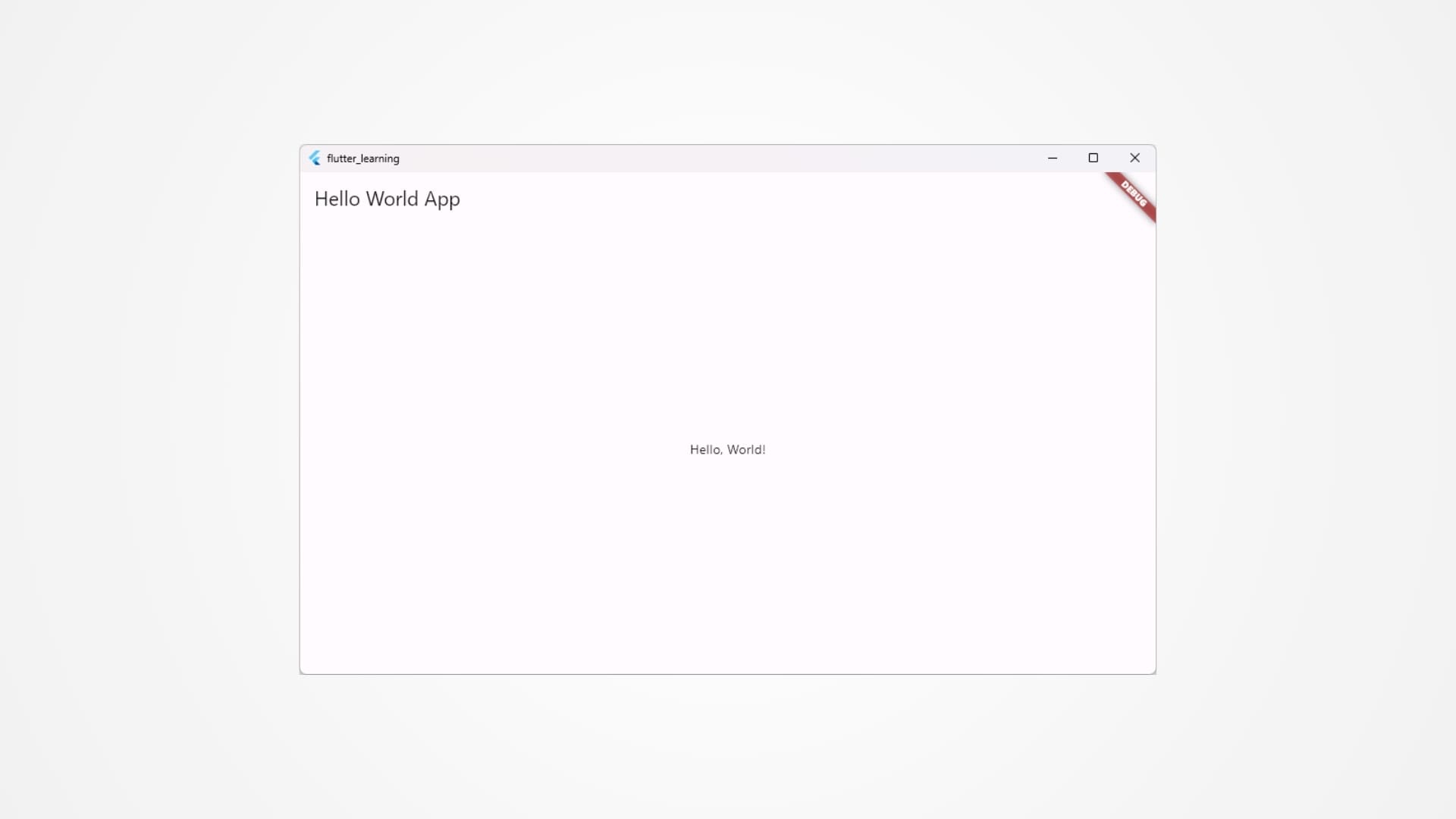Java is one of the most widely used programming languages in the world, popular for its platform independence, security, and performance. Developed by Sun Microsystems in the mid-1990s and later acquired by Oracle, Java allows developers to write code once and run it anywhere, thanks to the Java Virtual Machine (JVM). This feature makes Java a preferred language for everything from web applications to Android mobile apps, large enterprise systems, and even embedded devices.
To begin programming in Java, setting up the Java Development Kit (JDK) is essential. The JDK provides all the necessary tools to compile, run, and debug Java applications. Whether you are a beginner or an experienced developer, having the JDK correctly installed and configured is the first step toward productive Java development.
In this guide, we will walk you through the process of setting up your Java development environment by installing the JDK on different operating systems—Windows, macOS, and Linux. By the end of this article, you’ll be equipped with a working Java development environment, ready to start coding.
Understanding the Components of the JDK
The Java Development Kit (JDK) is a software development environment used for developing Java applications and applets. It includes several important tools and components that allow you to write, compile, and run Java programs:
- JVM (Java Virtual Machine): The JVM is responsible for running the compiled Java bytecode. It is platform-specific and abstracts the underlying hardware to allow Java applications to run on any system.
- Java Compiler (javac): This tool compiles your Java source code (written in
.javafiles) into bytecode (.classfiles) that the JVM can execute. - Java Runtime Environment (JRE): The JRE is a subset of the JDK, consisting of the JVM and essential libraries required to run Java programs. It does not include development tools like the compiler.
- Java Libraries and APIs: The JDK comes with an extensive set of built-in libraries that provide functionality for networking, data structures, file I/O, multithreading, and much more.
- Other Tools: The JDK also includes other utilities like javadoc (for generating documentation), jdb (Java Debugger), and jar (for packaging Java applications).
Step 1: Downloading the JDK
The first step to setting up your Java development environment is downloading the JDK. You can obtain the JDK from Oracle’s official website, but there are also other vendors, such as OpenJDK (open-source version of Java) and AdoptOpenJDK. For this guide, we’ll focus on Oracle’s JDK, but the installation process is similar for other distributions.
Downloading the JDK for Windows
- Go to the official Oracle website at https://www.oracle.com/java/technologies/javase-jdk15-downloads.html.
- Scroll down to the “Java SE Development Kit” section and select the version of the JDK that matches your operating system (Windows x64 Installer).
- Click the download link to begin the process.
- You will be prompted to review and accept the Oracle License Agreement before downloading.
Downloading the JDK for macOS
- Visit the same Oracle JDK download page mentioned above.
- Scroll down to the “Java SE Development Kit” section.
- Choose the macOS version of the JDK (macOS x64 DMG Installer) and click the download link.
- Accept the license agreement to start the download.
Downloading the JDK for Linux
- Navigate to the Oracle JDK download page.
- Scroll to the “Java SE Development Kit” section.
- Download the appropriate version for your Linux distribution. For Linux, you can choose from tar.gz or rpm packages depending on your system.
- Download the tar.gz if you are using a non-RPM-based distribution like Ubuntu or Debian. Download the rpm file if you’re on Fedora or CentOS.
Step 2: Installing the JDK
Once the JDK has been downloaded, the next step is installation. Let’s break down the installation process for different operating systems.
Installing the JDK on Windows
- Run the Installer: After the JDK installer has been downloaded, navigate to your Downloads folder, locate the .exe file, and double-click it to begin the installation.
- Follow the Setup Wizard: A setup wizard will guide you through the installation steps. Click Next to proceed.
- Choose Installation Path: You will be prompted to choose an installation directory. The default is usually C:\Program Files\Java\jdk-xx.x.x. You can change this directory if needed, but for simplicity, the default is fine.
- Complete the Installation: Once you click Next, the installer will copy the necessary files and complete the installation.
- Set Environment Variables: After installation, you need to configure your system to recognize the JDK. Follow these steps to set the JAVA_HOME and PATH variables:
- Open the Start Menu and search for Environment Variables.
- Under System Properties, click Environment Variables.
- In the System Variables section, find and select Path, then click Edit.
- Add the path to the bin directory inside the JDK installation folder (e.g.,
C:\Program Files\Java\jdk-xx.x.x\bin). - Create a new JAVA_HOME variable and set its value to the JDK installation path (e.g.,
C:\Program Files\Java\jdk-xx.x.x). - Click OK to save the changes.
Installing the JDK on macOS
- Open the DMG File: After the JDK DMG file is downloaded, locate it in your Downloads folder and double-click it to open.
- Run the Installer: In the DMG window, double-click the JDK installer package to launch the setup.
- Follow the Installation Prompts: Follow the on-screen instructions to install the JDK on your Mac. The default installation directory is /Library/Java/JavaVirtualMachines/.
- Set Environment Variables: After installation, you can add the JDK to your terminal’s PATH and set JAVA_HOME:
- Open the Terminal app.
- Add the following line to your bash_profile or zshrc file:
export JAVA_HOME=$(/usr/libexec/java_home)
export PATH=$JAVA_HOME/bin:$PATH- Save the file and run
source bash_profileorsource zshrcto apply the changes.
Installing the JDK on Linux
1. Extract the tar.gz File: If you downloaded the tar.gz package, open a terminal and navigate to the directory where it was downloaded. Extract the contents using the following command:
tar -xvf jdk-xx.x.x_linux-x64_bin.tar.gzThis will create a directory named jdk-xx.x.x.
2. Move the JDK Directory: Move the extracted JDK folder to /opt (a common location for third-party software):
sudo mv jdk-xx.x.x /opt/3. Set JAVA_HOME and PATH Variables: After moving the JDK, you need to set the JAVA_HOME and PATH environment variables. Add the following lines to your bashrc or zshrc file:
export JAVA_HOME=/opt/jdk-xx.x.x
export PATH=$JAVA_HOME/bin:$PATH4. Apply the Changes: Save the file and run the following command to apply the environment variables:
source /bashrcFor RPM-based distributions (Fedora, CentOS):
- Install the RPM package using the following command:
sudo rpm -ivh jdk-xx.x.x_linux-x64_bin.rpmStep 3: Verifying the Installation
After installing the JDK, it’s important to verify that the installation was successful and that the correct version of Java is being used.
Verify the JDK Installation
Open a terminal or command prompt and run the following command to check the installed version of Java:
java -versionThe output should display the version of Java installed on your system, for example:
java version "15.0.1" 2020-10-20
Java(TM) SE Runtime Environment (build 15.0.1+9-18)
Java HotSpot(TM) 64-Bit Server VM (build 15.0.1+9-18, mixed mode, sharing)Additionally, you can check if the javac compiler is properly set up by running:
javac -versionThis command should also display the version of the Java compiler that was installed.
Step 4: Writing Your First Java Program
With the JDK installed and verified, you’re ready to write and run your first Java program. Let’s create a basic Hello, World! program to ensure everything is set up correctly.
1. Open a text editor or your preferred IDE (like IntelliJ IDEA, Eclipse, or Visual Studio Code).
2. Create a new file called HelloWorld.java.
3. Write the following code in the file:
public class HelloWorld {
public static void main(String[] args) {
System.out.println("Hello, World!");
}
}4. Save the file and open a terminal or command prompt.
5. Navigate to the directory where you saved HelloWorld.java and compile the file using:
javac HelloWorld.java6. After the file is compiled, run the program with:
java HelloWorldIf everything was set up correctly, you should see the following output:
Hello, World!This simple program verifies that your JDK is installed and that you can successfully write and run Java code.
Configuring Integrated Development Environments (IDEs) for Java Development
Now that you have successfully installed the Java Development Kit (JDK) and run your first Java program using the terminal or command line, it’s time to enhance your Java development experience by using an Integrated Development Environment (IDE). IDEs provide advanced tools such as code completion, syntax highlighting, integrated debugging, and project management features, all of which make coding more efficient and productive. In this section, we’ll walk through setting up popular IDEs for Java development, focusing on IntelliJ IDEA, Eclipse, and NetBeans.
Each of these IDEs is widely used in the Java community and provides unique features that cater to different development needs. Whether you’re building simple applications or working on large enterprise projects, a well-configured IDE can streamline the development process and improve your coding efficiency.
Setting Up IntelliJ IDEA for Java Development
IntelliJ IDEA is one of the most powerful and user-friendly Java IDEs available today. Developed by JetBrains, IntelliJ IDEA comes in two editions: the Community Edition (free and open-source) and the Ultimate Edition (paid with additional enterprise features). For most Java developers, the Community Edition provides everything needed to develop, run, and debug Java applications.
Step 1: Download and Install IntelliJ IDEA
- Visit the official IntelliJ IDEA website at https://www.jetbrains.com/idea/download/.
- Choose the Community Edition and download the installer for your operating system (Windows, macOS, or Linux).
- Run the installer and follow the on-screen instructions to complete the installation.
- Once the installation is complete, launch IntelliJ IDEA.
Step 2: Configure IntelliJ IDEA for Java
- Select the JDK: When you open IntelliJ IDEA for the first time, it will prompt you to configure a Project SDK. Click on Configure > Project SDK and select the JDK installation directory on your system (this is the directory where you installed the JDK in the previous section).
- Create a New Project:
- Click on New Project from the welcome screen.
- Select Java from the list of project templates.
- In the Project SDK dropdown, select the JDK you configured in the previous step.
- Name your project and choose the location where you want to save it.
- Click Finish to create the project.
Step 3: Write and Run Your First Java Program in IntelliJ IDEA
1. Once your project is created, IntelliJ IDEA will automatically generate a project structure with a src folder for your source files.
2. Right-click the src folder and select New > Java Class to create a new class.
3. Name your class HelloWorld and add the following code:
public class HelloWorld {
public static void main(String[] args) {
System.out.println("Hello, World!");
}
}4. To run the program, click the green play icon in the toolbar or right-click the HelloWorld class and select Run ‘HelloWorld.main()’.
5. The output should appear in the console at the bottom of the IDE, displaying:
Hello, World!With IntelliJ IDEA, you can now easily manage and build Java projects, debug code, and work with version control systems like Git.
Setting Up Eclipse IDE for Java Development
Eclipse is another popular open-source IDE, especially known for its extensibility through plugins. Eclipse is widely used for Java development and supports a wide range of programming languages and tools, making it a great choice for developers working on multi-language projects.
Step 1: Download and Install Eclipse
- Go to the official Eclipse website at https://www.eclipse.org/downloads/.
- Download the Eclipse IDE for Java Developers package. This version comes pre-configured with tools specifically for Java development.
- Once the download is complete, extract the file (if using Windows or macOS) or install it via the package manager (for Linux distributions).
- Launch the Eclipse installer and follow the prompts to install Eclipse.
Step 2: Configure Eclipse for Java
- Select a Workspace: When you first launch Eclipse, you’ll be prompted to select a workspace. The workspace is a directory where all of your projects and files will be stored. You can use the default workspace or specify a different location.
- Set the JDK: Once Eclipse is open, you need to configure the JDK:
- Go to Window > Preferences (on macOS, go to Eclipse > Preferences).
- In the left-hand menu, select Java > Installed JREs.
- Click Add, select Standard VM, and then click Next.
- Browse to the directory where you installed the JDK and select it. Eclipse will automatically detect the JDK version.
- Click Finish to complete the configuration.
Step 3: Create and Run a Java Program in Eclipse
1. Create a New Java Project:
- Go to File > New > Java Project.
- Name your project (e.g., HelloWorldProject) and click Finish.
2. Create a New Class:
- Right-click the src folder in the Project Explorer and select New > Class.
- Name the class HelloWorld and select the checkbox for public static void main(String[] args), which generates the main method for you.
- Click Finish to create the class.
3. Write Code:
- Inside the HelloWorld class, add the following code:
public class HelloWorld {
public static void main(String[] args) {
System.out.println("Hello, World!");
}
}4. Run the Program:
- Right-click on the HelloWorld class in the Project Explorer and select Run As > Java Application.
- The output will appear in the Console window at the bottom of the IDE.
Eclipse provides excellent support for Java, including integrated debugging tools, automated refactoring, and a large ecosystem of plugins for adding additional functionality.
Setting Up NetBeans IDE for Java Development
NetBeans is an open-source IDE maintained by the Apache Software Foundation. It’s a fully-featured IDE that supports Java development along with other languages such as PHP, C++, and JavaScript. NetBeans offers a simple and intuitive user interface, making it a great option for Java beginners and professionals alike.
Step 1: Download and Install NetBeans
- Visit the NetBeans website at https://netbeans.apache.org/download/.
- Download the Apache NetBeans installer that includes the Java SE package.
- Run the installer and follow the instructions to install NetBeans on your system.
Step 2: Configure NetBeans for Java
- After launching NetBeans, go to Tools > Java Platforms to confirm that the JDK has been detected. If the JDK is not listed, click Add Platform and specify the path to the JDK installation directory.
- Once the JDK is configured, NetBeans will be ready for Java development.
Step 3: Create and Run a Java Program in NetBeans
1. Create a New Java Project:
- Go to File > New Project.
- Select Java > Java Application and click Next.
- Name your project and specify the location where you want to save it.
- Make sure the Create Main Class checkbox is selected, then click Finish.
2. Write Code:
- In the generated main class (e.g.,
HelloWorld), replace the default code with the following:
public class HelloWorld {
public static void main(String[] args) {
System.out.println("Hello, World!");
}
}3. Run the Program:
- To run your program, click the green Run button in the toolbar.
- The output will be displayed in the Output window at the bottom of the IDE.
NetBeans also includes a rich set of tools for debugging, refactoring, and version control, making it a solid choice for Java development.
Managing Multiple JDK Versions
In some cases, you may need to manage multiple JDK versions on your system, especially if you’re working on projects that require different versions of Java (e.g., a project using Java 8 while another uses Java 11 or Java 17). Most IDEs allow you to switch between different JDK versions seamlessly.
Switching JDKs in IntelliJ IDEA
- Go to File > Project Structure.
- Under Project Settings > Project, you’ll see the Project SDK option. Here, you can select the version of the JDK you want to use for the project.
- If you need to add a new JDK version, click New and select the path to the desired JDK installation.
Switching JDKs in Eclipse
- Go to Window > Preferences > Java > Installed JREs.
- You can add different JDKs by clicking Add and specifying the path to the JDK installation.
- You can then switch the JDK used for specific projects by right-clicking on the project, selecting Properties, and changing the Java Build Path.
Switching JDKs in NetBeans
- In NetBeans, go to Tools > Java Platforms.
- From here, you can manage multiple Java platforms and set the default platform for each project by selecting the project, right-clicking, and choosing Properties.
Advanced Tools and Configurations for Java Development: Maven, Gradle, and Version Control
Now that you have set up your Java development environment and explored different Integrated Development Environments (IDEs), it’s time to dive into some of the more advanced tools and configurations that can streamline your Java development workflow. These tools include build automation and dependency management systems like Maven and Gradle, as well as version control systems such as Git for managing your codebase efficiently.
In this section, we will cover the following topics:
- An introduction to Maven and Gradle, their differences, and how to set them up for your Java projects.
- Using Git for version control to collaborate with teams and manage code history.
- Configuring your Java projects with Maven or Gradle for easier build processes, dependency management, and scalability.
Introduction to Build Automation and Dependency Management
As Java projects grow in complexity, managing external libraries, compiling code, packaging artifacts, and running tests manually becomes cumbersome. This is where build automation tools like Maven and Gradle come in. These tools automate the build process, manage dependencies, and help package applications for deployment, allowing developers to focus on writing code rather than dealing with repetitive build tasks.
Maven
Apache Maven is one of the most popular build automation tools in the Java ecosystem. Maven uses a declarative approach where the project structure, dependencies, and build lifecycle are defined in a Project Object Model (POM) file (pom.xml). Maven also provides a set of predefined goals for compiling code, running tests, packaging applications (e.g., into JAR or WAR files), and deploying them.
Gradle
Gradle is another powerful build automation tool that has gained popularity for its flexibility and scalability. Unlike Maven, which uses XML, Gradle’s build configuration is written in Groovy or Kotlin, making it more readable and concise. Gradle allows developers to customize the build process using a domain-specific language (DSL) while offering better performance for large projects. Gradle is widely used in Android development as the default build system for Android projects.
Setting Up Maven for Java Projects
Step 1: Installing Maven
Before you can use Maven in your Java projects, you need to install it on your system.
1. Download Maven: Visit the official Maven download page at https://maven.apache.org/download.cgi and download the latest version of Apache Maven.
2. Install Maven:
- Windows: Extract the downloaded archive and place it in a directory of your choice (e.g.,
C:\Program Files\Apache Maven). Add thebindirectory to your system’s PATH environment variable. - macOS/Linux: Extract the archive, move it to
/optor another suitable location, and add thebindirectory to your PATH. You can do this by adding the following lines to yourbashrcorzshrcfile:
export PATH=/opt/apache-maven-x.x.x/bin:$PATH3. Verify Installation: Open a terminal or command prompt and run the following command to verify that Maven was installed correctly:
mvn -v- You should see output showing the Maven version and Java version being used.
Step 2: Creating a Maven Project
You can create a new Maven project directly from the command line or using an IDE like IntelliJ IDEA or Eclipse.
2. Command Line: Open a terminal and run the following command to create a new Maven project:
mvn archetype:generate -DgroupId=com.example -DartifactId=my-app -DarchetypeArtifactId=maven-archetype-quickstart -DinteractiveMode=falseThis command generates a basic project structure under the my-app directory with the following files:
- pom.xml: The Maven configuration file where dependencies and project information are defined.
- src/main/java: The directory containing your Java source code.
- src/test/java: The directory for your test classes.
2. Using IntelliJ IDEA: If you’re using IntelliJ IDEA, you can easily create a new Maven project by selecting File > New Project, choosing Maven, and configuring the group ID, artifact ID, and JDK version.
Step 3: Defining Dependencies in pom.xml
The heart of a Maven project is the pom.xml file, where you define dependencies and configure the build process. For example, to add a dependency on JUnit for writing unit tests, you would include the following XML snippet in your pom.xml:
<dependencies>
<dependency>
<groupId>junit</groupId>
<artifactId>junit</artifactId>
<version>4.13.2</version>
<scope>test</scope>
</dependency>
</dependencies>Maven automatically downloads the required dependencies from public repositories, like Maven Central, and manages them for your project.
Step 4: Building and Running a Maven Project
1. Compile the Project: Run the following command to compile your project:
mvn compile2. Run the Project: Use the exec:java goal to run your project:
mvn exec:java -Dexec.mainClass="com.example.App"3. Package the Project: To create a JAR file, run:
mvn package- This generates a JAR file in the
targetdirectory that can be executed or deployed.
Setting Up Gradle for Java Projects
Step 1: Installing Gradle
1. Download Gradle: Visit the official Gradle website at https://gradle.org/install/ and download the latest version of Gradle.
2. Install Gradle:
- Windows: Extract the downloaded archive and add the
bindirectory to your PATH environment variable. - macOS/Linux: Extract the archive and add the
bindirectory to your PATH by modifying yourbashrcorzshrcfile:
export PATH=/opt/gradle-x.x.x/bin:$PATH3. Verify Installation: Run the following command in the terminal to confirm that Gradle is installed:
gradle -vStep 2: Creating a Gradle Project
You can create a new Gradle project from the command line or an IDE.
1. Command Line: Open a terminal and run the following command to create a new Java project with Gradle:
gradle init --type java-applicationThis command generates a basic Gradle project structure with the following key files:
- build.gradle: The Gradle build script, where dependencies and tasks are defined.
- src/main/java: The directory containing your Java source files.
- src/test/java: The directory for your test classes.
2. Using IntelliJ IDEA: IntelliJ IDEA has excellent support for Gradle. To create a new Gradle project, go to File > New Project, choose Gradle, and configure the project settings.
Step 3: Adding Dependencies in build.gradle
Gradle’s build script is more concise and uses Groovy or Kotlin. To add a dependency on JUnit, you would modify your build.gradle file as follows:
dependencies {
testImplementation 'junit:junit:4.13.2'
}Gradle automatically resolves dependencies and downloads them from repositories like Maven Central.
Step 4: Building and Running a Gradle Project
1. Compile the Project: To compile your Java project, run:
gradle build2. Run the Project: You can run the application using:
gradle run3. Create a JAR File: Gradle allows you to easily package your project into a JAR by running:
gradle jarUsing Git for Version Control in Java Projects
Version control is an essential part of modern software development, allowing developers to track changes, collaborate with teams, and manage different versions of the codebase. Git is the most widely used version control system and integrates seamlessly with Java development tools.
Step 1: Installing Git
1. Windows: Download and install Git from https://git-scm.com/.
2. macOS: Git can be installed via Homebrew:
brew install git3. Linux: Install Git using your package manager. For Ubuntu:
sudo apt install gitStep 2: Initializing a Git Repository
1. Navigate to your Java project directory and initialize a Git repository:
git init2. Add Files: Add the project files to the Git repository:
git add .3. Commit Changes: Commit the changes with a meaningful message:
git commit -m "Initial commit"Step 3: Pushing Code to GitHub
1. Create a New Repository: Go to GitHub and create a new repository.
2. Add Remote: Link your local repository to GitHub:
git remote add origin https://github.com/username/repo-name.git3. Push to GitHub: Push your local changes to GitHub:
git push -u origin masterYou can now collaborate with other developers, track code changes, and manage project versions using Git.
Enhancing Java Development with Build Tools and Version Control
By integrating Maven or Gradle into your Java development environment, you can automate the build process, manage dependencies, and streamline project packaging. Both tools offer powerful features that scale with the complexity of your projects. Additionally, using Git for version control allows you to collaborate with teams, track code history, and maintain different branches for development, testing, and production environments.
With these advanced tools, you are now equipped to manage complex Java projects efficiently, making your development process faster, more reliable, and easier to scale.








